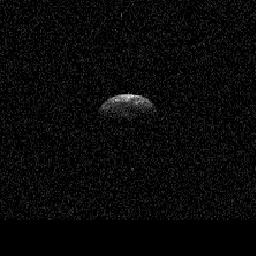A WISE Way to Find Killer Asteroids
Back in 2005, the U.S. Congress ordered NASA to survey the skies and locate by 2020 nearly all (90 percent) of potentially Earth-threatening asteroids down to a diameter of 140 meters. Most objects larger than a kilometer have already been tracked. The idea is to extend the search and go after smal…

Back in 2005, the U.S. Congress ordered NASA to survey the skies and locate by 2020 nearly all (90 percent) of potentially Earth-threatening asteroids down to a diameter of 140 meters. Most objects larger than a kilometer have already been tracked. The idea is to extend the search and go after smaller would-be impactors that, while not civilization-threatening, could still kill millions if they hit a populated area.
Congress forgot just one thing: the money. So far there's been no funding for a telescope network that can find 90 percent of the 140-meter threats by 2020. So in the meantime, we make do.
It turns out that several existing or planned telescopes, both ground- and space-based, can do at least part of the job (for a list, start reading on page 8 of this recent National Academy of Sciences report). One of them, the Wide-Field Infrared Survey Explorer (WISE), is scheduled to launch on December 9.
WISE's main purpose is to survey the sky in the mid-infrared, looking primarily for objects that are warm but not hot—dim stars, dust, brown dwarfs, that sort of thing. It also will make hundreds of thousands of asteroid detections, and, if the team's estimates are correct, should discover hundreds of new "potentially hazardous objects," or PHOs, whose orbits intersect with Earth's. Read about WISE here.